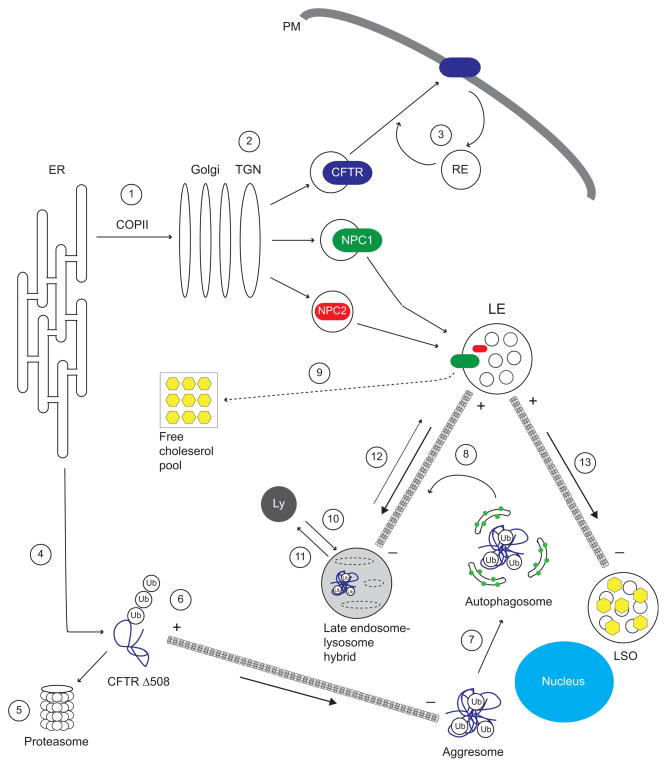Figure 2.
NPC and CF converge on multiple intracellular trafficking pathways. CFTR, NPC1, and NPC2 exit the ER via COPII vesicles (1), and are delivered to final destinations by transport vesicles derived from TGN (2). Internalized CFTR is sorted back to the plasma membrane from recycling endosomes (RE) (3). The CFTR misfolding mutation Δ508 cannot exit the ER and undergoes retrotranslocation to the cytosol (4) where it is degraded by the ubiquitin-proteasome pathway (5). Polyubiquitin chains link overexpressed CFTR Δ508 to minus-end directed MT dynein-dynactin motors (6) to facilitate formation of pericentriolar aggresomes. Aggresomes are engulfed by LC3-positive (green circles) autophagosomes (7) which then fuse with endosomes en route to Ly where its contents are degraded (8). NPC1 and NPC2 act synergistically to mobilize free cholesterol from LE generating a pool of free cholesterol (yellow hexagons) available for delivery to membranes throughout the cell (9). NPC1 and NPC2 also have independent roles, regulating LE-Ly fusion (10) and Ly reformation (11), respectively. LE motility and positioning is normally controlled by the net balance of vectorial movements toward opposite ends of MTs (12). LEs accumulate at MT minus ends leading to formation of abnormal LSOs in NPC and some forms of CF (13).

